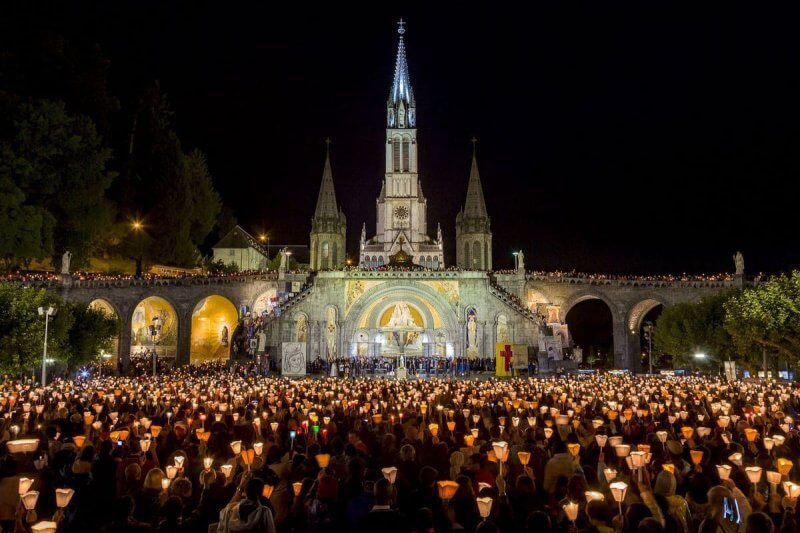Lourdes (France) is one of the most visited cities not only in its own country, but also in the whole of Europe. But not ordinary tourists come to this city to see its sights and walk along the modest streets. These are mostly pilgrims – about 5 million of them come to Lourdes every year.
General information about Lourdes
Lourdes is located in the southern part of France, in the Haute-Pyrenees department, near the border with Spain.
This small town is located on the banks of the river Gave de Pau, in the foothills, and is surrounded by the idyllic mountain scenery of the Pyrenees.
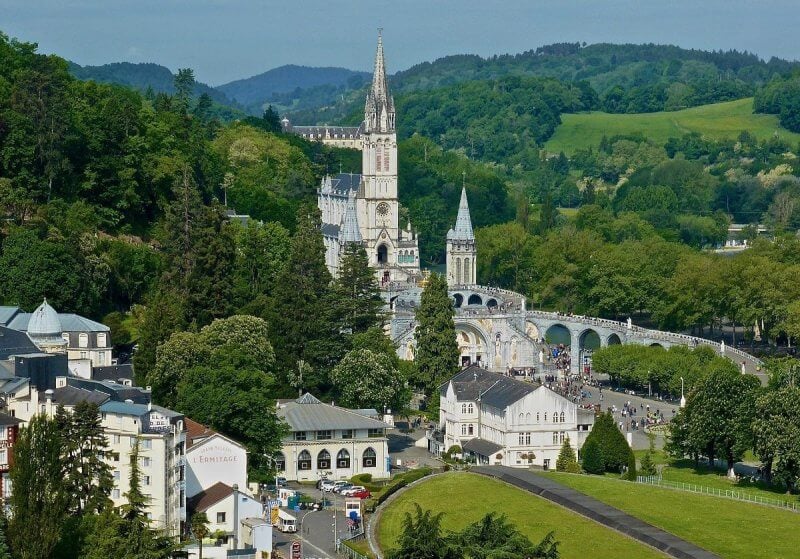
Lourdes occupies a very small area-37 km2. According to statistics, in 2022, this territory had just under 14,000 inhabitants.
Lourdes-pilgrimage center of Europe
Lourdes became the world center of pilgrimage thanks to a significant event that occurred on February 11, 1858. On this day, the Virgin Mary appeared to 14-year-old Bernadette Soubirous, who lives in this city. At least, that’s what Bernadette herself said. It happened in Masabiel – that’s the name of one of the many caves that are quite numerous near Lourdes. According to Bernadette, in total, the Virgin Mary appeared to her 18 times, the last appearance occurred on July 16 of the same year, 1858.
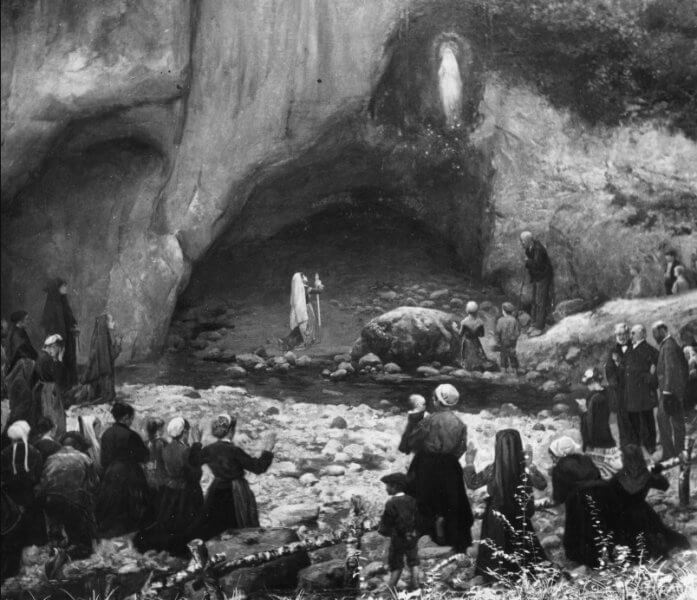
Naturally, the girl’s statements were received with disbelief. She was repeatedly questioned about the phenomena by administrative authorities and church officials. Multiple medical examinations were also conducted, and all of them recognized the absolute sanity and balance of the young girl’s character.
As a result, the Catholic Church recognized the apparitions of the Virgin Mary as authentic, which turned Lourdes into the pilgrimage center of Europe.
After some time, Bernadette became a monk, and in 1933 the Catholic Church canonized her under the name of St. Bernadette.
Since then, about 5 million pilgrims have visited Lourdes every year, and more than 70 thousand of them are people who hope to find relief from their ailments there.
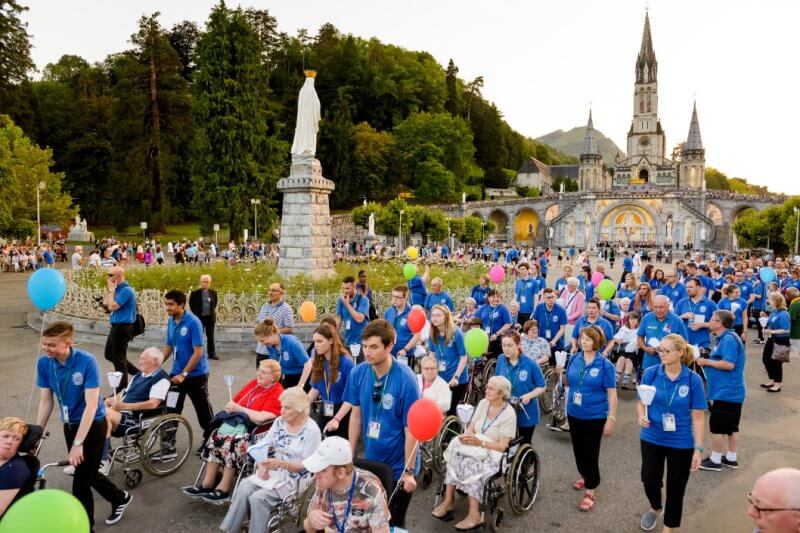
Among the largest pilgrimage events that take place every year in Lourdes are::
- International pilgrimage of Catholic military personnel (May-month).
- National French Pilgrimage (Feast of the Assumption of the Virgin in August).
- Dominican Pilgrimage (Feast of the Virgin Mary of the Rosary in October).
Interesting!There are an incredible number of volunteers in Lourdes – young people of different nationalities who have come specifically to help sick pilgrims. What is most surprising: the inspired faces of these young people shine no less than the face of the Virgin. And if churches, striking in their grandeur and beauty, can only in exceptional cases push an unbeliever to Faith, then volunteers who have already found this Faith and are able to warm the souls of other people with their warmth can change a lot…
Sanctuary
The story of Bernadette Soubirous and the apparitions of the Mother of God to her can be treated in different ways – either to believe or to laugh softly. It all depends on your personal worldview. But no one will be able to remain indifferent at the sight of the main object of pilgrimage – sanctuary.
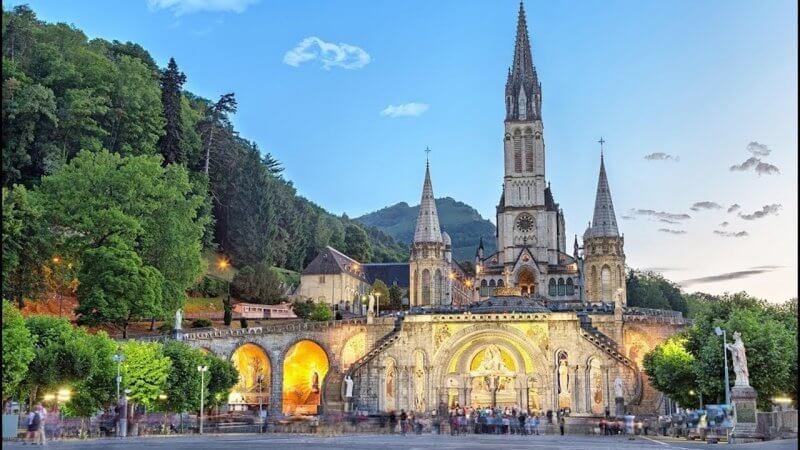
Sanctuary (Notre-Dame de Lourdes) is located in the west of Lourdes, on the bend of the left bank of the river Gave-de-Pau. This religious complex was built on a rock above the Masabiel grotto, where Bernadette first saw the apparition of the Mother of God.
The Saint-Michel Bridge serves as a kind of entrance to the open-air temple. The large area behind the bridge is the Esplanade of processions, which in Sanctuary is assigned the role of a nave. Under the Esplanade is the Basilica of St. Pius X, an underground structure with a capacity of up to 25,000 people, completely devoid of architectural decoration.
- Sanctuary address: 1 Av. Mgr Theas, 65108 Lourdes, France
- Website: www.lourdes-france.org/en.
- The sanctuary is open daily and around the clock, admission is free.
Lower and Upper Basilicas
Two basilicas became the basis of the complex: the lower one – the Holy Rosary and the upper one – the Immaculate Conception. The sanctuary is designed so that the cross above the dome of the lower basilica is located at the same level as the entrance to the upper one.

The Basilica of the Rosary is designed in neo-Byzantine style, the author of the project was the architect Leopold Hardy. The basilica was built in 1883-1889, and in 1901 its solemn consecration took place. Capacity – up to 1500 people. The semi-circular facade of the building is made of white marble, and it bears the image of Mary presenting the Rosary to St. Dominic. Inside there are 15 amazing chapels with mosaics that are dedicated to the mysteries of the Rosary – joyful, mournful and glorious. Another beautiful and largest mosaic is in the main presbytery, it depicts the Virgin Mary with angels and the motto “Through Mary to Jesus” is written.
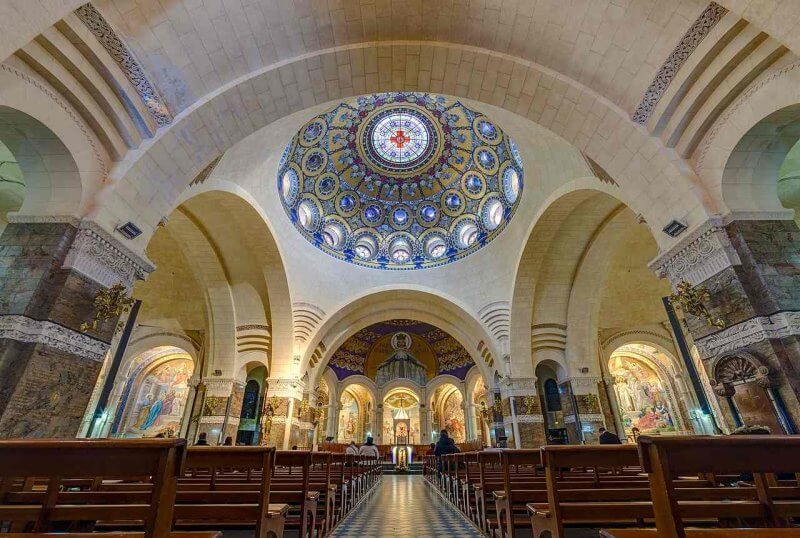
The Basilica of the Immaculate Conception has a neo-Gothic style, designed by Hippolyte Durand. Construction lasted from 1862 to 1871, and the consecration took place in 1876. The main decoration of the basilica is the stained glass windows, which depict episodes from the life of the Mother of God.
The Way of the Cross
To the south of the basilica complex, behind the highway, is the beginning of the Way of the Cross. The Way of the Cross itself runs along the steep slopes of the hill and consists of 14 stops-according to the number of stops that Jesus Christ made during the ascent to Calvary. For pilgrims who are unable to move along the steep slopes of the main Way of the Cross, there is a second route-in a flat area on the right bank of the river, slightly below the religious complex.
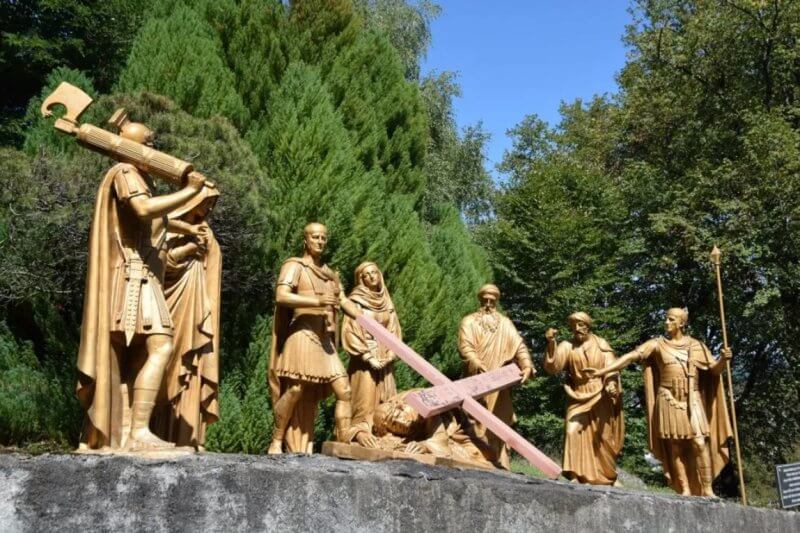
St. Bernadette’s Church
The Church of St. Bernadette stands opposite Masabielle, but already on the right bank of the river. This is a fairly new building, it was built in 1988.
The church is very spacious, accommodating 5,000 people. The layout is quite unusual – there are several movable walls that can divide the room into two parts if necessary.
The interior decoration is also not quite familiar, even heating pipes are visible on the ceiling.
Interesting fact! On the territory of the sanctuary, candlesticks are installed, in which 700 tons of candles placed by pilgrims are burned every year.
Masabiel Grotto with miraculous water
From the basilicas, you can go down to the Masabiel grotto-the place of the apparitions of Our Lady. It is located in a rock 27 m high, which is also called Masabiel, that is, “old rock”. The grotto has a karst nature, smooth and wet walls. In height, it reaches 3.8 m, in width-9.85 m, and goes deep into the rock at 9.5 m. In the center of the grotto there is an altar for celebrating mass, and in the far right corner there is a statue of the Mother of God with a height of 2 m.
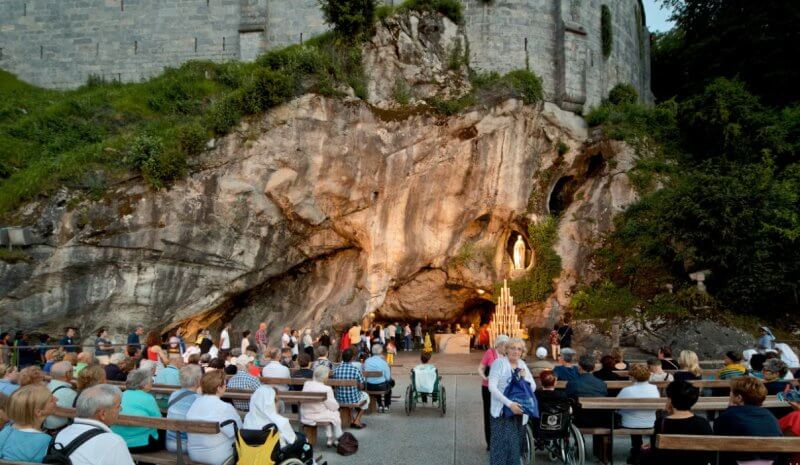
There is also a spring in Masabiel that Bernadette discovered at the time. This is one of the karst springs that feed the Gav de Pau River. Scientists analyzed the water and came to the conclusion that its chemical composition is no different from the water in neighboring springs.
Interesting fact! Catholics consider Lourdes water in the spring to be curative. Since 1858, almost 7,000 unexplained healings have been recorded in Lourdes, and as of 2013, only 69 of them were considered miraculous by the Catholic Church. By the way, the most purchased product in Lourdes is plastic bottles with religious symbols for a set of healing water.
Now the source is covered with a glass screen and highlighted. Water from it is supplied to the pump room, which is located next to the grotto. In the pump room, everyone can get water for themselves.
Near the Masabiel grotto, there are 6 women’s and 11 men’s bathing fonts, which are also supplied with water from a spring. Every year, almost 350,000 pilgrims perform ablutions in the baptismal font.
Other attractions in Lourdes
The city is located in a very beautiful area, which attracts many fans of ecotourism. And lovers of sightseeing programs will appreciate the medieval charm of Lourdes.
Important! The tourist office is located at Place Peyramale, 65100 Lourdes, France.
Pic du Ger Funicular
At the peak of Pic du Ger, there is an observation deck with maps and telescopes, offering a stunning 360 ° panoramic view of Lourdes and the Pyrenees. In addition, there are several mountain paths to the Pic du Ger, one of which leads to a mysterious high-altitude grotto. After a walk, you can relax in a cozy restaurant with terrace benches.
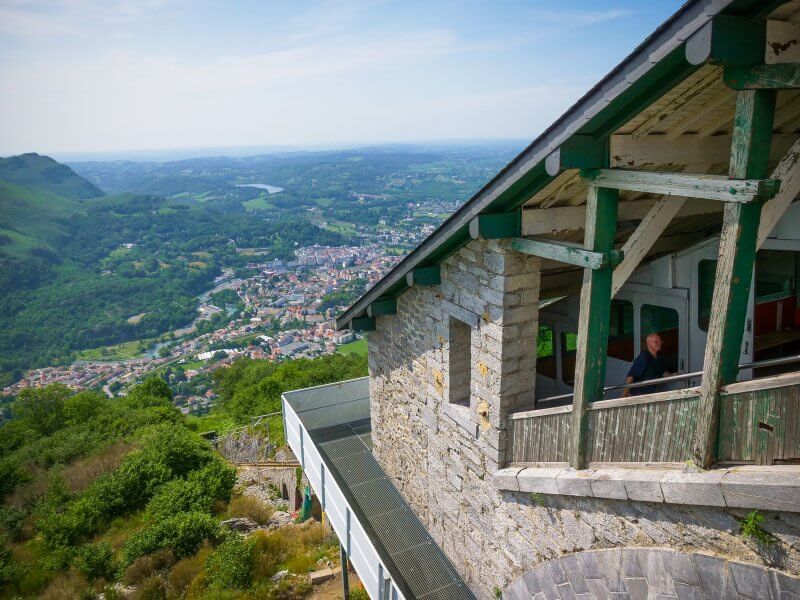
The journey is incredibly scenic! Especially if you make it on the funicular, which has been operating since 1900. The funicular passes 1,110 meters in 10 minutes, while passing through 2 tunnels and over a viaduct. In the middle of the ascent, the rails diverge into 2 tracks, so that 2 trailers can move apart, which move in different directions: to the top and down.
- From February to mid-March and in November, the funicular runs from 9: 30 to 17: 00, but the last car departs at 16: 15. From mid-March to the end of September, working hours are from 9: 15 to 18: 00. Departures usually take place every 30 minutes.
- The full ticket price is 12 €, for children aged 6-11 years-9 €, for teenagers under 18 years and students-10 €. Children under 6 years old can ride the funicular free of charge.
- The lower station is located at 59 Av. Francis Lagardere, 65100 Lourdes, France.
Betarram Caves
The Betarram Caves, recognized as the most famous natural attraction of the Pyrenees, are located 12 km from the city.
After the accidental discovery of one of the caves in 1819, speleologists spent 10 years exploring there and as a result discovered 5,200 m of underground galleries created inside the limestone mountain by the river current.
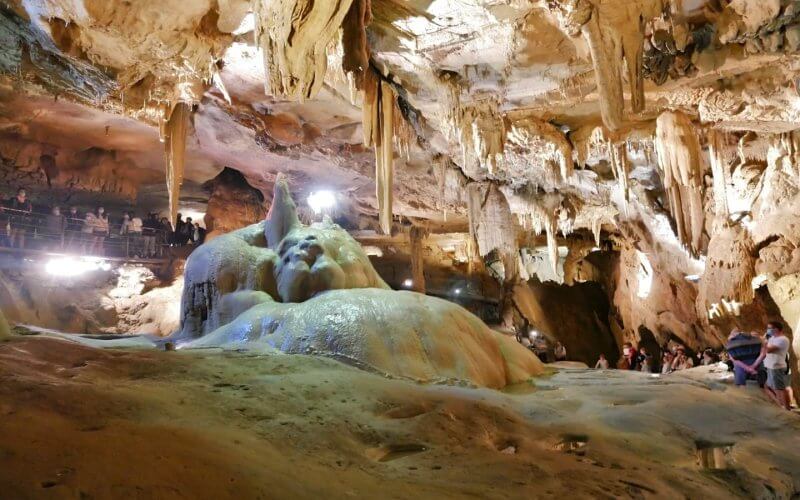
In the early 1900s, the Betarram Caves already hosted the first tourists. Now the excursion route is 2.8 km and 3 floors of underground galleries with an impressive height difference of 80 m. The upper section is wider, there are 2 spacious halls connected to each other with an original sponge ceiling. The lower floor is located at the level of the river, which, after going underground for 3.5 km, flows out of the mountain and joins the Gave de Pau.
The Betarram Caves tour consists of several stages: a route in the open carriages of a small train, a boat ride on an underground lake, and a walking tour. Alternating stalagmites, stalactites, arches, draperies-all this is revealed during the tour.
A tip! In the underground cave, the temperature is kept at 14° C throughout the year, so you need to take warm clothes with you on the tour.
- The entrance to the cave is located in the Atlantic Pyrenees, in the city of Asson. The exit is located in the Hautes-Pyrenees, in the municipality of Saint-Paix-de-Bigorre. The entrance and exit are approximately 2.5 km apart.
- At the exit there is a large parking lot for cars and buses. From there, some visitors are taken on a free bus to the entrance, where ticket offices work.
- From February 11 to March 24, from Monday to Thursday, the entrance to the cave is possible at 14: 30 and 16: 00, on Friday-at 14: 00. From March 25 to July 8, and then from August 25 to October 30, visiting the caves is possible on any day of the week from 9: 00 to 12:From July 8 to August 25, you can explore the caves on any day of the week from 9: 00 to 18: 00.
- The ticket price for an individual visit is 16.5 € for an adult and 11.5 €for a child aged 4-12 years. For group members, a full ticket costs 14 €, for a child 4-12 years old-10 €.
- Official website: www.betharram.com/tarifs.
Massey’s Garden
Next to Lourdes, in the northern direction from it, there is a small town of Tarbes, and it is on its territory that the amazing Massey Garden is located. Designed by the botanist Massey, it was created in the first half of the nineteenth century.

The magnificent landscaped garden covers almost 12 hectares, where rare plants grow and no less rare animals live. There you can also see the ruins of an ancient monastery from the Abbey of Saint-Sevre-de-Roustan and visit the Massey Museum with its exceptional Hussar collection.
This is interesting! There are several statues in the garden, including one by Edmond Deska, created in 1887. The statue, depicting a naked man, caused constant discontent among the conservative residents of Lourdes. After the townspeople sent a petition to the city authorities asking them to remove the statue from a public place, the garden guard put on her underpants. The statue currently stands in front of the Massey Museum, but it has been sealed off.
- The Massey Gardens are located at Rue Massey, 65000 Tarbes, France.
- Visiting hours: from 8: 88 to 20: 00.
- From Lourdes, you can reach Tarbes in 30 minutes by car, route 21. From Lourdes, from the SNCF station, you can reach Tarbes by train in 14 minutes. Another option is the No. 965 bus, which takes 38 minutes from the Lourdes-Gare Routiere stop to Tarbes-Allee Leclerc.
Places to stay in Lourdes
Due to the huge number of pilgrims who began to arrive in Lourdes in the middle of the XIX century, the city’s tourist infrastructure was actively developing. Today, the number of hotels in Lourdes is second only to one city in France – Paris.
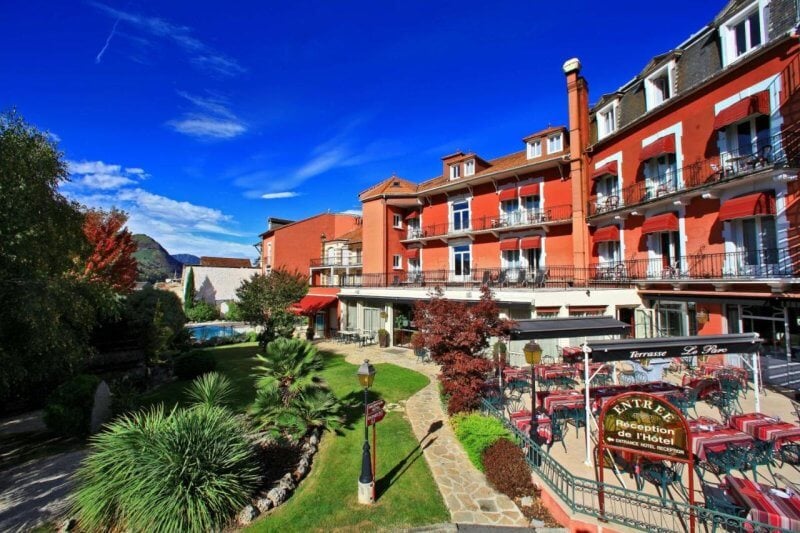
Most pilgrims and tourists come to the city of Lourdes in the period from April to mid-October, respectively, for this time it is better to book a hotel room in advance.
Despite the fact that the demand for hotel rooms is always high, the price level remains very attractive. A double room in a 3* hotel can be found even for 40 € per day, but mostly such rooms are rented for 50-60 €. Perhaps the most affordable prices will be for apartments: you can rent a 1-room apartment for 35-40 €.
Public transport links
Just 10 km from Lourdes is Tarbes-Lourdes-Pyrenees International Airport, where planes arrive from Paris (Orly Airport), Krakow, Milan, Rome, Lisbon, London, Brussels, Dublin.
In 45 km there is another airport-Pau – Pyrenees. Planes from Paris (Charles de Gaulle and Orly airports), Nice, Lyon, and Marseille land there.
Rail connections are well established between Lourdes and Paris – there are 5 high-speed TGV trains every day. The train covers the distance between these cities in France in 4 hours and 50 minutes, and the price of one-way tickets ranges from 44 to 113 €. Lourdes is also served by trains from Geneva, Marseille, Nice and Toulon.
Buses to Lourdes are convenient from Paris and Toulouse. Qui bus – a night bus that is much cheaper than a train ride. So, from Paris you can drive for 29-35€, departure at 22: 45, arrival in Lourdes at 11: 10. The fare from Toulouse to Lourdes is only € 5, and the journey time is 3 hours.
Interesting fact! In 1943, director Henry King made the film “The Song of Bernadette”, based on the novel of the same name by Franz Werfel. The film depicts the life story of Bernadette Soubirous from the city of Lourdes (France).
Besancon, France: Top Attractions and Activities in The Heritage City

